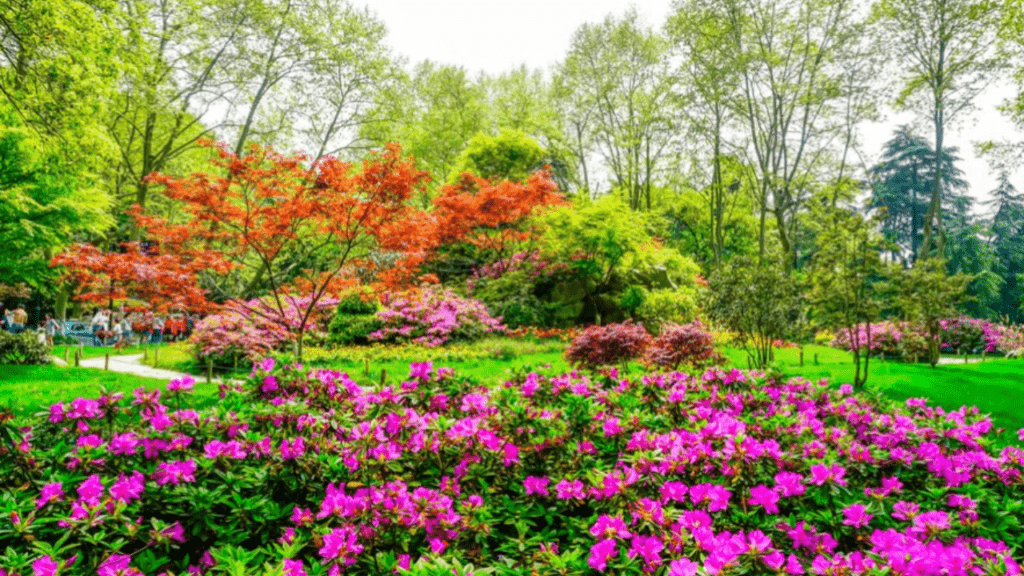
Creating Stunning Tree Gardens: Design Tips and Planting Ideas
Creating a stunning tree garden can be a rewarding and visually appealing addition to any outdoor space. In this article, we will provide expert tips and ideas for designing, planting, and maintaining a beautiful tree gardens. Whether you are a beginner or an experienced gardener, you will find valuable information to help you create the perfect tree garden to enhance your outdoor environment. From selecting the right tree species to creating a cohesive design, we will cover everything you need to know to create a stunning tree garden that will be the envy of your neighborhood.
A tree garden is a carefully designed and maintained area that features a variety of trees, shrubs, and other plants to create a visually appealing and functional outdoor space. Tree gardens can provide shade, habitat for wildlife, and a beautiful backdrop for outdoor activities. They can also add value to a property and enhance the overall landscape.
Tree gardens are a valuable addition to any landscape because they can add beauty, shade, and environmental benefits. Trees help to improve air quality, reduce noise pollution, and provide habitat for birds and other wildlife. They also contribute to the overall health and well-being of the environment by reducing erosion and providing oxygen.
In addition to their environmental benefits, tree gardens can also enhance the aesthetic appeal of a property. With careful planning and design, a tree garden can create a peaceful and tranquil outdoor space for relaxation and enjoyment. By selecting the right mix of tree species and incorporating other plants and hardscape elements, a tree garden can become a focal point of any landscape.
In conclusion, a tree garden is a valuable addition to any landscape, providing both environmental and aesthetic benefits. With careful planning and maintenance, a tree garden can enhance the overall outdoor environment and create a beautiful and functional space for relaxation and enjoyment.
Table of Contents
ToggleBenefits of Tree Gardens
Tree gardens offer a wide range of benefits to both the environment and the individuals who enjoy them. One of the key benefits of tree gardens is their ability to improve air quality by absorbing carbon dioxide and releasing oxygen. This helps to create a healthier and cleaner environment for everyone. Additionally, tree gardens can also reduce noise pollution by acting as a natural barrier to block out unwanted sounds. They also provide habitat for birds and other wildlife, contributing to the overall biodiversity of an area.
Furthermore, tree gardens play a critical role in reducing erosion and preventing soil runoff. Their roots help to stabilize the soil, preventing it from washing away during heavy rain or wind. In addition, trees can provide shade, helping to lower temperatures and reduce energy costs for nearby buildings.
From an aesthetic standpoint, tree gardens can enhance the beauty of any landscape. They provide a natural and calming environment, creating a peaceful space for relaxation and enjoyment. With the right mix of tree species and complementary plants and hardscape elements, a tree garden can become a stunning focal point of any outdoor space.
In conclusion, tree gardens offer a wealth of benefits, from environmental improvements to aesthetic enhancements. By carefully planning and maintaining a tree garden, individuals can create a beautiful and functional outdoor space that contributes positively to the environment and the overall well-being of the community.
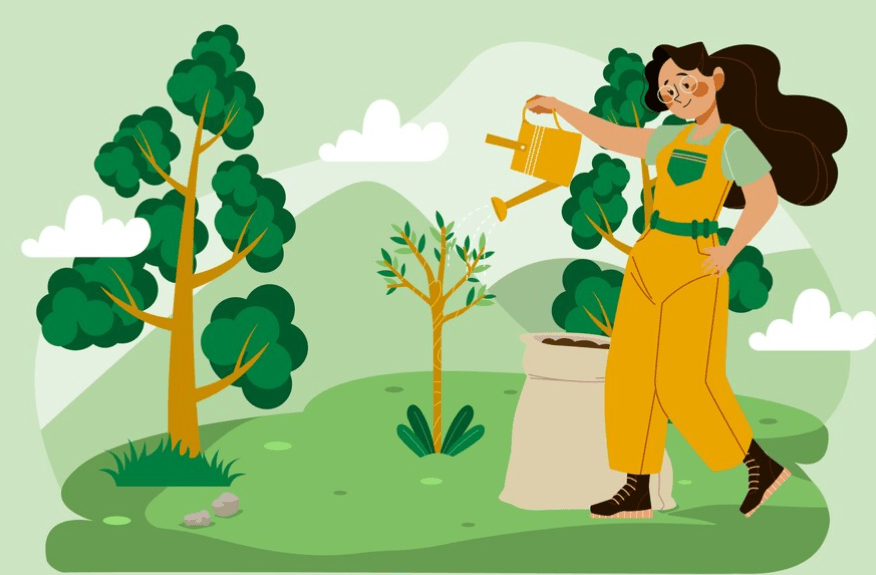
Discuss the advantages of incorporating trees into garden landscapes, such as providing shade, enhancing privacy, attracting wildlife, and adding visual interest.
Incorporating trees into garden landscapes has numerous advantages. One of the most obvious benefits is the provision of shade. Trees can provide relief from the sun’s harsh rays, creating a more comfortable outdoor environment for relaxation and recreation. In addition, trees can also enhance privacy, creating a natural barrier between properties and blocking unwanted views. Furthermore, trees can attract wildlife, providing habitats for birds, insects, and other creatures that contribute to the ecosystem. This can add an element of liveliness and natural beauty to the garden. Finally, trees add visual interest to the landscape, creating a sense of depth and dimension with their varying heights, textures, and colors. Overall, incorporating trees into garden landscapes not only improves the aesthetics but also contributes to the functionality and ecological benefits of the outdoor space.
Highlight the environmental benefits of tree gardens, including carbon sequestration and air purification.
Tree gardens offer a multitude of environmental benefits, making them a valuable addition to any landscape. One of the key advantages of tree gardens is their ability to sequester carbon dioxide from the atmosphere, helping to mitigate the effects of climate change. Trees absorb carbon dioxide during photosynthesis and store it in their biomass, effectively reducing the amount of greenhouse gases in the atmosphere. In addition to carbon sequestration, trees also play a crucial role in purifying the air. Through the process of transpiration, trees release water vapor and oxygen into the air while removing pollutants and airborne particles, thereby improving air quality. This can have a significant impact on human health and the overall well-being of the environment. By incorporating tree gardens into our landscapes, we can contribute to the fight against climate change and create healthier, more sustainable communities for future generations.
Planning Your Tree Garden
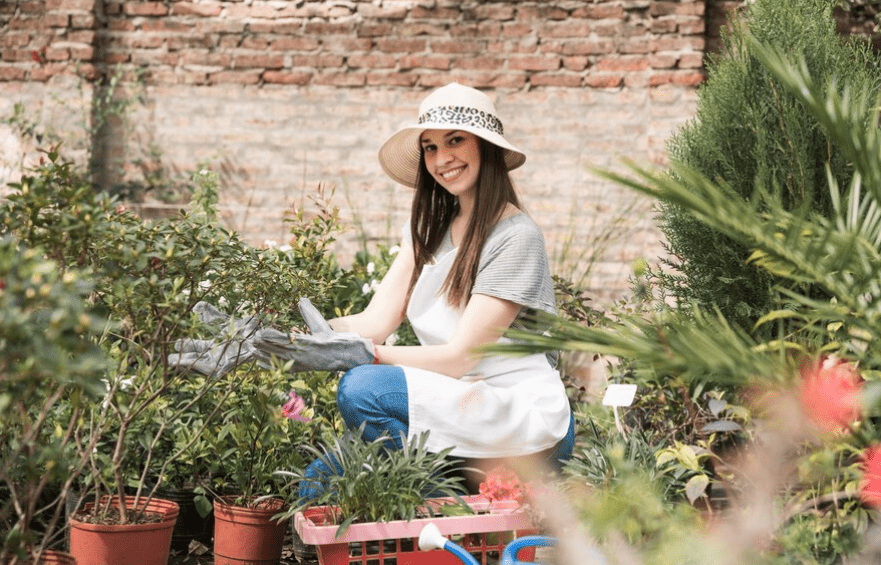
Consider factors such as available space, climate, soil type, and sunlight exposure when planning a tree garden.
When planning a tree garden, it’s important to consider several factors to ensure the success and health of the trees. One key factor to consider is the available space in your garden. Different tree species require different amounts of space to grow and thrive, so it’s important to choose trees that are suitable for the size of your garden. Additionally, consider the climate in your area and choose trees that are well-suited to the local climate and weather conditions.
Another important factor to consider is the type of soil in your garden. Different tree species have different soil requirements, so it’s important to choose trees that are compatible with the soil in your garden. Additionally, consider the sunlight exposure in your garden and choose trees that will thrive in the amount of sunlight available.
By considering these factors and planning carefully, you can create a beautiful and functional tree garden that will provide environmental benefits and enhance the overall aesthetics of your outdoor space.
Discuss how to select suitable tree species based on desired features (e.g., flowering trees, evergreens, fruit-bearing trees).
When selecting tree species for your garden, it’s important to consider the specific features you desire, such as flowering trees, evergreens, or fruit-bearing trees. If you want to add color and beauty to your garden, consider flowering trees such as cherry blossoms, magnolias, or dogwoods. These trees will produce beautiful blooms and add visual interest to your garden. If you’re looking for trees that will provide year-round greenery, consider evergreen species such as pine, spruce, or cedar. These trees will maintain their foliage throughout the year, providing a lush and vibrant backdrop to your garden. If you’re interested in growing your own fruit, consider fruit-bearing trees such as apple, pear, or cherry trees. These trees will not only provide delicious fruits for you to enjoy, but they will also attract pollinators and wildlife to your garden. By identifying the specific features you desire in your tree garden, you can select suitable tree species that will meet your needs and enhance the beauty and functionality of your outdoor space.
Design Elements for Tree Gardens
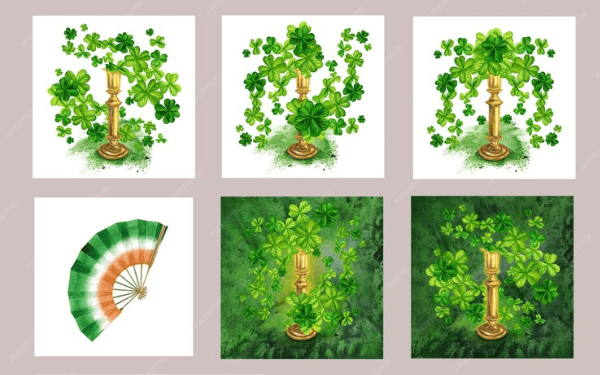
Explore design principles for tree gardens, including tree placement, focal points, pathways, and companion planting.
When designing a tree garden, it’s important to consider the placement of your trees. Think about the mature size and shape of the trees, and how they will fit into your overall garden design. You’ll want to create focal points with your trees, using them to draw the eye and create visual interest. Consider pathways and walkways within your garden to create a sense of flow and exploration. You can also incorporate companion planting, selecting plants that thrive in the shade of your trees to create a harmonious and balanced garden. By carefully considering these design principles, you can create a tree garden that is both beautiful and functional.
Provide tips on creating balance and harmony in tree garden layouts.
When creating a tree garden layout, it’s important to consider design elements that will provide balance and harmony. Start by identifying the specific features you desire in your tree garden, such as fruit-bearing trees or trees that attract pollinators and wildlife. Once you have a clear vision, consider the placement of your trees. Think about the mature size and shape of the trees, and how they will fit into your overall garden design. Create focal points with your trees to draw the eye and create visual interest. Pathways and walkways within your garden can create a sense of flow and exploration. You can also incorporate companion planting, selecting plants that thrive in the shade of your trees to create a harmonious and balanced garden. By carefully considering these design principles, you can create a tree garden that is not only beautiful, but also functional and harmonious.
Tree Care and Maintenance
Tree Care and Maintenance is essential for ensuring that your trees remain healthy and vibrant. Regular pruning and trimming of branches can help promote tree growth and maintain a pleasing shape. It’s important to monitor the health of your trees and address any signs of disease or pest infestation promptly. Providing adequate water and nutrients, especially during the growing season, will help support the overall health of your trees. Mulching around the base of your trees can also help retain moisture and regulate soil temperature. Regular inspections of your trees for signs of stress or damage can help prevent potential issues from worsening. By taking proactive steps to care for your trees, you can enjoy a beautiful and thriving tree garden for years to come.
Choosing Trees for Different Garden Styles
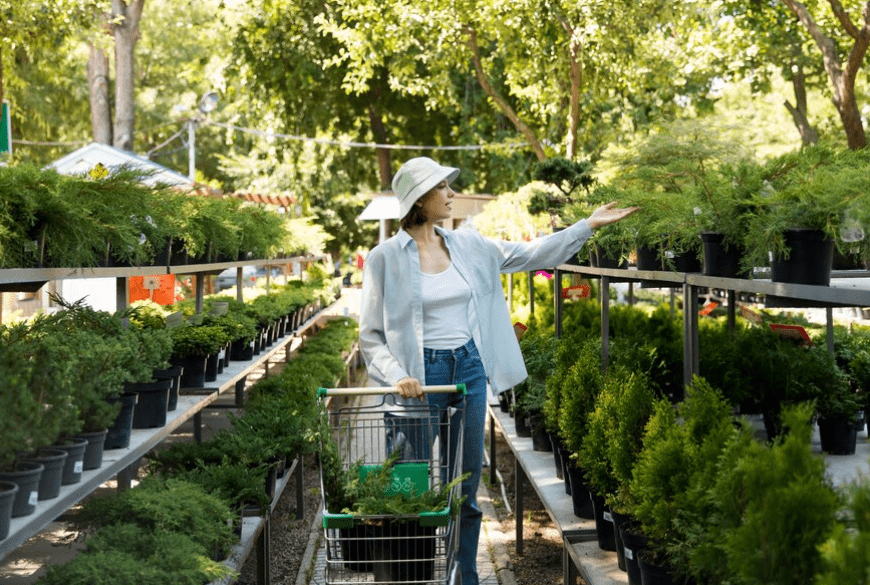
When it comes to choosing trees for different garden styles, there are a few key factors to consider. For a formal garden, you may want to choose trees with a more symmetrical and structured shape, such as topiary or columnar trees. In a more natural or informal garden, you might opt for trees with a more relaxed and organic form, like flowering or fruit trees. Consider the mature size and shape of the tree, as well as its seasonal interest and potential for providing shade or privacy. Additionally, you can incorporate companion planting, selecting plants that thrive in the shade of your trees to create a harmonious and balanced garden. By carefully considering these design principles, you can create a tree garden that is not only beautiful but also functional and harmonious. And don’t forget about tree care and maintenance – regular pruning, watering, and monitoring for signs of disease or pests are essential for ensuring the health and vibrancy of your trees. By taking proactive steps to care for your trees, you can enjoy a beautiful and thriving tree garden for years to come.
Creating Wildlife Habitat
Creating Wildlife Habitat is an important part of maintaining a healthy and balanced ecosystem in your garden. By incorporating elements like bird feeders, water features, and native plants, you can attract a variety of wildlife to your garden, including birds, butterflies, and beneficial insects. Providing food, shelter, and water for these creatures not only adds to the beauty and diversity of your garden but also helps to support the local wildlife population. Additionally, creating a wildlife habitat in your garden can be a rewarding and educational experience, allowing you to observe and learn about the natural world around you. Remember to research the specific needs and habits of the wildlife you want to attract, and consider consulting with local wildlife organizations for additional guidance on creating a successful and sustainable habitat. By creating a wildlife-friendly garden, you can contribute to the health and well-being of the environment while enjoying the beauty and wonder of nature in your own backyard.
Environmental Considerations

When designing a tree garden, it’s important to consider environmental factors to ensure that it is both beautiful and beneficial to the ecosystem. By choosing native plant species, you can support local biodiversity and create a sustainable, low-maintenance garden. Additionally, minimizing the use of pesticides and fertilizers can help protect the surrounding environment and wildlife. It’s also important to consider water conservation and soil health when caring for your tree garden, as these factors contribute to the overall environmental impact. By taking these considerations into account, you can create a tree garden that not only enhances your outdoor space but also contributes positively to the environment.
Inspiration and Case Studies
When it comes to creating a wildlife-friendly garden, it’s important to do your research and understand the specific needs of the wildlife you want to attract. Consulting with local wildlife organizations can provide valuable guidance on how to create a successful and sustainable habitat in your garden. By providing food, shelter, and water for local wildlife, you can contribute to the health and well-being of the environment while enjoying the beauty of nature right in your own backyard. Additionally, creating a tree garden with native plant species can support local biodiversity and create a sustainable, low-maintenance garden. By minimizing the use of pesticides and fertilizers and considering water conservation and soil health, you can have a positive impact on the environment while enhancing your outdoor space. Looking at case studies and success stories can provide inspiration and guidance for creating your own wildlife-friendly garden.
In conclusion, creating a stunning tree garden involves careful planning, strategic placement of trees, and thoughtful consideration of the overall design. By incorporating a variety of tree species, creating focal points, and paying attention to the surrounding landscape, you can create a visually stunning and harmonious tree garden. Additionally, proper maintenance and care of the trees will ensure that your garden continues to thrive and impress for years to come. For more detailed design tips and planting ideas, be sure to check out our upcoming workshop on creating stunning tree gardens.
Frequently asked questions And Answer
When designing a tree garden, consider the size and shape of the trees, as well as the overall layout of the garden. Group trees of different heights and shapes together to create visual interest, and consider adding pathways or seating areas to enhance the garden’s functionality.
Consider planting a mix of flowering trees, evergreens, and deciduous trees to create a diverse and visually appealing garden. You can also incorporate shrubs, ground covers, and perennial flowers to add color and texture to the space.
It’s important to choose trees and plants that are well-suited to your climate and soil conditions. Provide proper irrigation and mulching, and regularly monitor for pests and diseases to ensure the health of your tree garden.
Yes, you can create a tree garden in a small space by choosing smaller, dwarf varieties of trees and carefully planning the layout to maximize the available space. Vertical gardening techniques, such as using trellises or espaliered trees, can also be used to create a tree garden in a small area.
Some common mistakes to avoid include overcrowding trees, planting species that are not well-suited to the local climate, and neglecting proper maintenance and care. It’s also important to consider the long-term growth of the trees and plan for their future size.
Consider using native tree species, implementing water-saving irrigation systems, and incorporating composting and organic gardening practices to create a sustainable and eco-friendly tree garden.
There are many tree species that are well-suited for tree gardens, including Japanese maple, flowering cherry, dogwood, magnolia, and redbud trees. It’s important to choose trees that fit the overall design and climate of your garden.
You can add visual interest to a tree garden by incorporating features such as sculptures, water features, ornamental planters, and decorative pathways. Additionally, using a variety of tree shapes, sizes, and colors can create a visually dynamic and engaging garden space.
